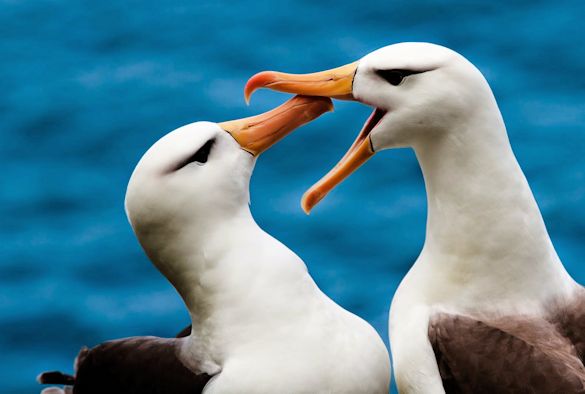A study of seabirds’ foraging habits has found that they have strong long term preferences for the habitat in which they forage, and that those that can repeatedly go to the same place to find food have a better chance of fledging a chick than those who have to visit many locations.
Researchers from the University of Liverpool and Centre d’Etudes Biologique de Chizé, CNRS analysed tracking data for black-browed albatrosses collected over 11 years on the Kerguelen Archipelago, in the Southern Indian Ocean.
Following the same birds across multiple foraging trips with and between years, they identified the habitat and locations individuals preferred. They found that most of the birds had highly individual and specialised habitat choices, which may indicate individual prey preferences, persisting between breeding seasons.
However, a subsection of birds were able to find their chosen habitat by repeatedly visiting the same areas and these had a better chance of fledging a chick. This result suggests that foraging site fidelity drives differences in reproductive success.
This may be because individuals which can repeatedly go to the same place save energy by reducing searching and travelling costs, or that they are more successful foragers and so do not have to visit as many prey patches.
Dr Samantha Patrick, Lecturer in Marine Biology in the University’s School of Environmental Sciences, said: “Seabirds have the ability to locate food across a seemingly featureless ocean and this study helps us understand what birds are seeking when they go to sea to forage”.
“Black-browed albatrosses are very long lived birds and this evidence that they maintain foraging preferences across long time periods suggests that habitat preference may be relatively fixed”.
“If individuals always seek the same environmental conditions, changes to the ocean in response to changing climate may remove the habitat which some birds need to forage and survive, and we lack and through understanding of how able these birds are to adapt to this”.
The research is published in the Journal of Animal Ecology.
Save
Save
